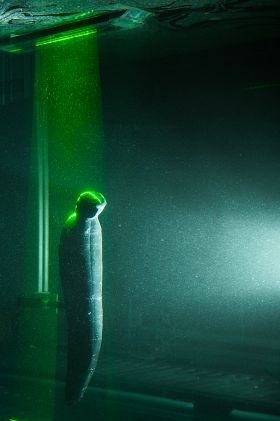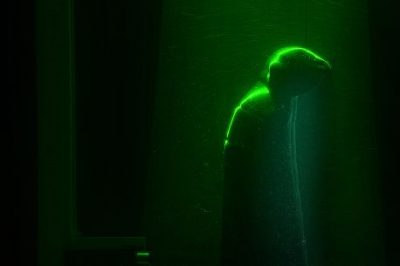 Biology unites with robotics and advanced flow visualization techniques in this science lab in an effort to understand how living organisms, particularly insects, fly. Here, biologists must become engineers and vice-versa as insects and insect-analogs are employed to understand fundamental aerodynamic mechanisms for generating lift and thrust.
Biology unites with robotics and advanced flow visualization techniques in this science lab in an effort to understand how living organisms, particularly insects, fly. Here, biologists must become engineers and vice-versa as insects and insect-analogs are employed to understand fundamental aerodynamic mechanisms for generating lift and thrust.
The lab blends biomechanical studies of real insects using approaches such as high-speed cinematography, force measurements, electromyography and mathematical modeling with traditional aerodynamic studies of wings and wing models that are electromechanically actuated in wind tunnels and water tanks for flow visualization. This lab also is equipped for 3D laser scanning, 3D printing and CAD. In addition to understanding how insects fly, the lab has enjoyed a history of collaboratively working with researchers toward the development of micro aerial vehicles (MAVs) and biologically inspired means of MAV control.
 At the heart of this lab is a 4m X 1m X 1m tow tank for low-Reynolds flow visualization studies. The strength of this particular (and unique) tow tank is the gantry system with integrated stereo digital particle image velocimetry. The gantry is also equipped for powering and controlling robotic models (with multiple degrees of freedom via servo, DC or stepper motor) and for concurrent data acquisition. The research conducted in this lab falls primarily within the area of advanced aerodynamics.
At the heart of this lab is a 4m X 1m X 1m tow tank for low-Reynolds flow visualization studies. The strength of this particular (and unique) tow tank is the gantry system with integrated stereo digital particle image velocimetry. The gantry is also equipped for powering and controlling robotic models (with multiple degrees of freedom via servo, DC or stepper motor) and for concurrent data acquisition. The research conducted in this lab falls primarily within the area of advanced aerodynamics.